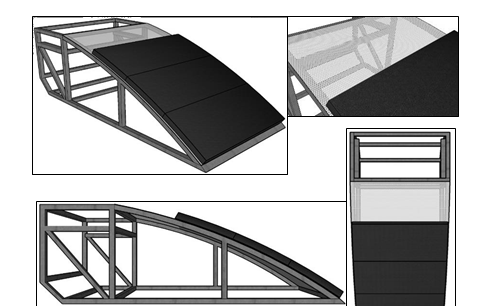UNJUK KERJA PEREDAM GELOMBANG VARIASI TIPE PANTAI LANDAI DAN PARABOLA BERPORI PADA TANGKI GELOMBANG LABORATORIUM TEKNOLOGI KELAUTAN
Isi Artikel Utama
Abstrak
perubahan iklim global yang tidak stabil, gelombang laut dapat merusak kawasan pantai dan bangunan
disekitarnya. Peredam gelombang diperlukan untuk mengurangi energi gelombang datang dan gelombang pantul
yang berlebihan dan tidak diinginkan di area perairan. Keefektifan peredam gelombang variasi tipe pantai landai
dan parabola berpori untuk meredam gelombang air pantul menjadi tujuan dalam penelitian ini. Penelitian ini
dilakukan di Laboratorium Riset Teknologi Kelautan Universitas Hasanuddin. Gelombang reguler diuji dalam
wave flume dengan panjang 25 m, lebar 1 m dan kedalaman 1,2 m yang dilengkapi dengan pembangkit gelombang
tipe flap. Peredam gelombang di ujung lainnya dibuat dengan foam dengan tebal 20 cm dan dipasang pada
penampang baja berpori dengan porositas 0.155091. Delapan titik wave probe ditempatkan bersama disepanjang
wave flume. Wave probe 8 diletakkan sejauh panjang gelombang dari peredam gelombang dan berjarak 1/8
panjang gelombang antar probe 1-8. Data fluktuasi muka air diolah untuk mendapatkan tinggi gelombang di setiap
wave probe menggunakan metode zero up crossing. Untuk menguji kinerja peredam gelombang ini, dilakukan
pengujian dan koefisien refleksinya dibandingkan dengan model teoritis dan eksperimental lainnya. Percobaan
laboratorium dilakukan untuk mengakuisisi data gelombang dan pengolahan data numerik dilakukan untuk
memperjelas hasil. Percobaan peredaman gelombang yang dilakukan dilaboratorium menghasilkan peredaman
gelombang yang relatif baik dimana nilai koefisien refleksi yang didapatkan rata-rata dibawah 0.2 (Hr/Hi) akan
tetapi kinerja peredam gelombang di laboratorium belum seefektif peredam yang menggunakan media bongkahan
batu sehingga diperlukan pengembangan dan analisis lebih lanjut.
Unduhan
Rincian Artikel
Referensi
Ayunarita S. 2017. Studi Pola Arus, Pasang Surut Dan Gelombang Di Perairan Pantai Pelawan Desa Pangke Kecamatan Meral Kabupaten Karimun Provinsi Kepulauan Riau. Fakultas Perikanan dan Kelautan. Universitas Riau: Pekanbaru., Korea.
Data Statistik Perikanan, S. D. (2011). Statistik Perikanan Tanggap Indonesia, Vol. 11, No. 1, 2010.
Kementerian Kelautan dan Perikanan, Direktorat Jendral Perikanan Tangkap, 30
Kurniawan, R., 2012, Karakteristik Gelombang Laut dan Daerah Rawan Gelombang Tinggi Di Perairan Indonesia. [Tesis] Depok: Universitas Indonesia.
Pramono, D., 2005, Budaya Bahari. In D. Pramono, Budaya Bahari (pp. 120- 122). Jakarta: Gramedia Pustaka Utama.
Roza, E., 2017, Maritim Indonesia, Kemewahan Yang Luar Biasa. Kementerian Kelautan dan Perikanan Republik Indonesia, p. 1.
Jasin, Ml., Yosua, ARDM., 2015, Analisa Karakteristik Gelombang Di Pantai Bulo Rerer Kecamatan Kombi Kabupaten Minahasa. Jurnal Sipil Statik. Vol 3. (1) ISSN: 2337-6732.
Triatmodjo, B., 1999, Teknik Pantai, Beta Offset, Yogyakarta.
Siombo, M., 2009, Pengaruh Metode Penyuluhan dan Motivasi Nelayan Terhadap Pengetahuan Tentang Penangkapan Ikan Ramah Lingkungan (Eksperimen Pada Nelayan di Tempat Pelelangan Ikan (TPI) Muara Angke, Jakarta Utara 2008). Sinopsis Disertasi Program Pascasarjana, UNJ, 2.
Sutirto, Trisnoyuwono, D. 2014. Gelombang Dan Arus Laut Lepas. Graha Ilmu: Yogyakarta.

